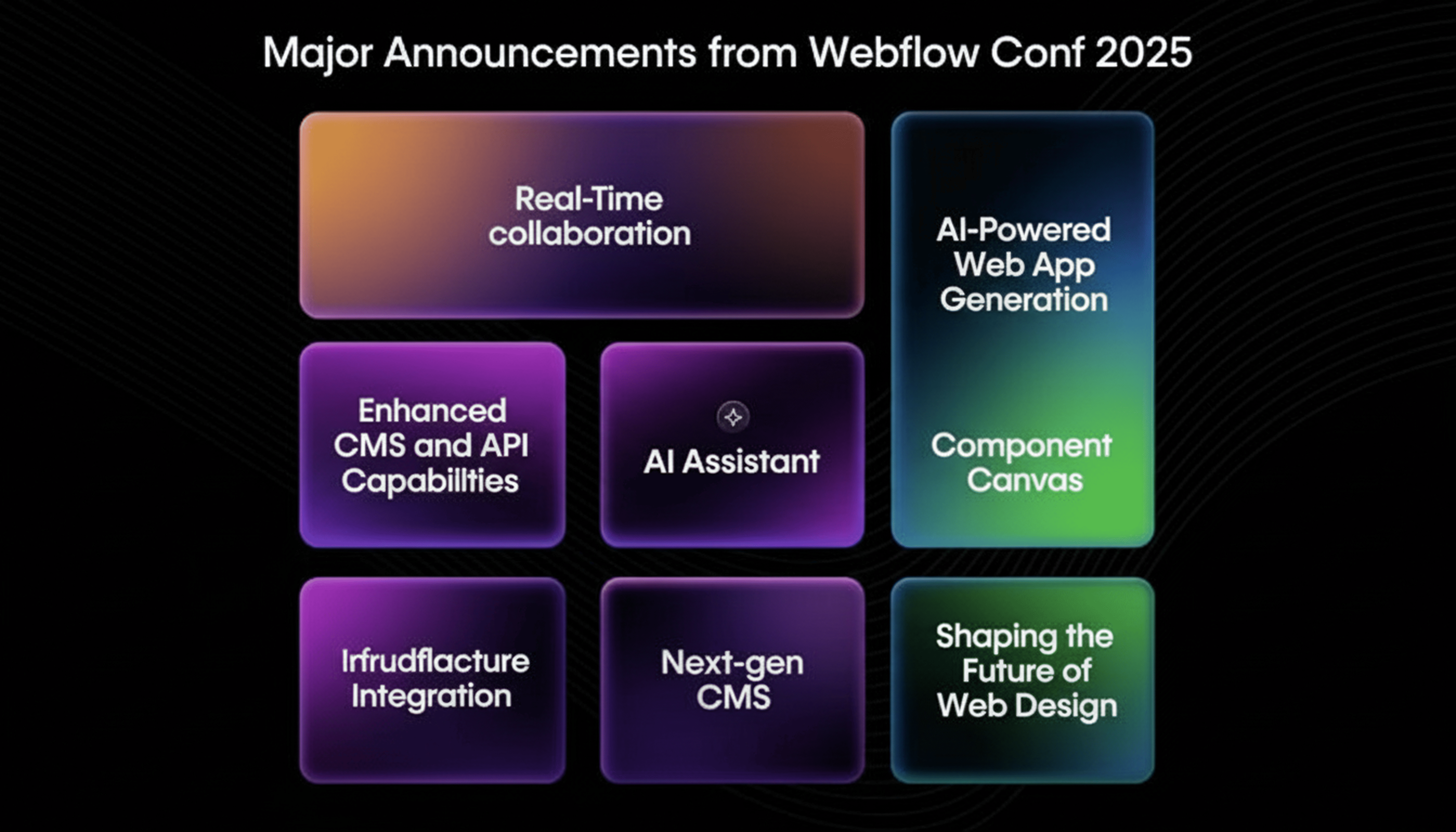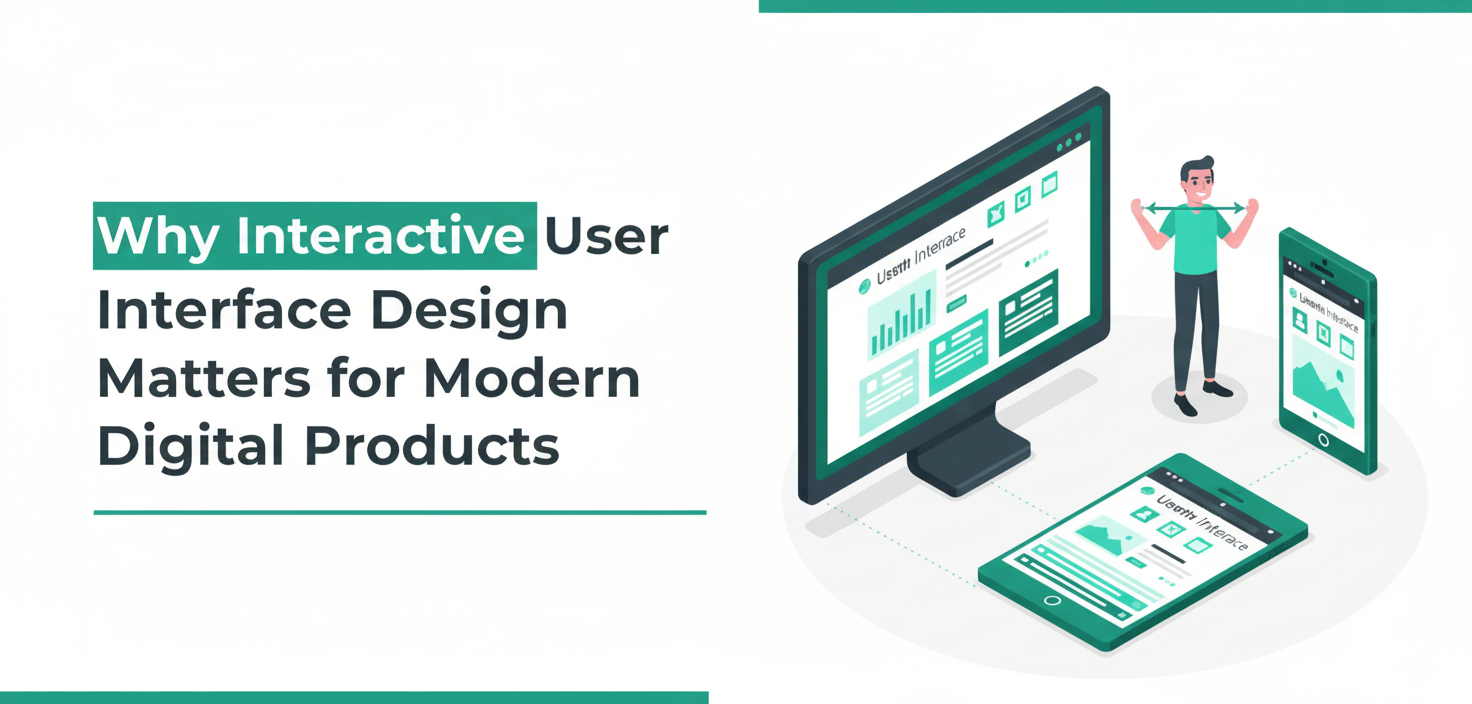Webflow Conf 2025: Empowering the Future of Web Design and Development

Webflow Conf 2025, held on September 17–18 in New York City, marked a major milestone in the evolution of web design and development. Gathering thousands of designers, developers, and digital creators from around the globe, this year's conference highlighted Webflow’s unwavering commitment to innovation, particularly in AI integration, real-time collaboration, and scalable web architecture. With a strong focus on streamlining workflows and enhancing the creative process, Webflow positioned itself as a comprehensive platform capable of powering modern digital experiences.
The conference was not just about product announcements—it was a glimpse into the future of web design, showcasing how designers and developers can leverage cutting-edge tools to deliver faster, smarter, and more dynamic websites.

Major Announcements from Webflow Conf 2025
1. AI-Powered Web App Generation
One of the most talked-about features unveiled was Webflow’s AI Assistant. Acting as a conversational partner, it helps teams orchestrate complex web development tasks, from generating fully functional websites to creating reusable code components—all from a single prompt.
Imagine being able to describe the functionality of a web app in plain English and having Webflow automatically produce production-ready components that are fully responsive and ready for deployment. This AI integration significantly reduces development time, encourages experimentation, and allows teams to focus on creative problem-solving rather than repetitive coding.
The AI Assistant also learns from team preferences and coding patterns over time, making it an intelligent collaborator rather than just a tool. By bridging the gap between design and development, it empowers teams to iterate faster and deliver high-quality web experiences more efficiently.
2. Real-Time Collaboration
Collaboration is key in today’s fast-paced digital projects, and Webflow took this to the next level with real-time co-editing. Multiple team members can now work on the same page simultaneously, seeing each other's changes live. This drastically reduces version conflicts and accelerates the design-to-development workflow.
Moreover, Webflow introduced comment-only links, allowing stakeholders who do not have Webflow accounts to provide feedback directly in the Designer. This feature enhances client communication, makes review cycles faster, and ensures that feedback is implemented accurately without the need for external tools.
In practical terms, this means remote teams can collaborate seamlessly across time zones, ensuring projects move forward smoothly without bottlenecks.
3. Component Canvas
Another standout feature is the Component Canvas, a dedicated space for creating, managing, and previewing components. Designers can now see how changes affect all component variants in real time, which is particularly valuable for maintaining consistency in large-scale projects and design systems.
The Component Canvas makes it easy to reuse design elements across multiple pages and projects, ensuring brand consistency while saving time. Whether you’re building a complex e-commerce site or a marketing landing page, this feature helps keep your workflow organized and efficient.
4. Enhanced CMS and API Capabilities
Webflow’s CMS has received a major overhaul, designed to handle greater complexity and scalability. Sites can now support up to 1 million CMS items per site and per collection, opening doors for large-scale content-driven platforms.
The revamped API and Content Delivery APIs make Webflow even more versatile for headless CMS use cases and omnichannel content distribution. Developers can now push content seamlessly across multiple platforms—websites, mobile apps, or even IoT devices—without worrying about infrastructure limitations.
This update ensures that Webflow can serve not just small businesses but also enterprise-level clients who demand performance, reliability, and scalability.
5. Cloudflare Infrastructure Integration
To enhance website performance and security, Webflow partnered with Cloudflare, integrating its robust infrastructure to deliver faster load times and more reliable hosting.
This integration ensures that websites built on Webflow are not only visually stunning but also technically optimized. Improved security features, such as DDoS protection and automated SSL certificates, help businesses build trust with their audience, while performance enhancements reduce bounce rates and improve overall user engagement.
Shaping the Future of Web Design
The announcements from Webflow Conf 2025 underscore a significant shift toward integrated, efficient, and AI-driven web development. By combining cutting-edge AI capabilities with enhanced collaboration tools and scalable infrastructure, Webflow is enabling designers and developers to create dynamic, personalized, and high-performing digital experiences.
From real-time collaboration that fosters teamwork across continents to AI tools that transform how websites are built, these innovations are not just incremental updates—they are game-changing advancements that set new standards for the industry.
As the web continues to evolve, Webflow is clearly positioning itself at the forefront of creative and technical innovation, empowering teams to build smarter, faster, and more beautiful web experiences. For anyone involved in web design, development, or digital strategy, staying updated with Webflow’s evolving ecosystem is now more important than ever.
Related Articles
Stay updated with articles that explore design, strategy, and innovation. My blog offers tips, case studies, and reflections on the latest trends and best practices in the industry.

.png)
